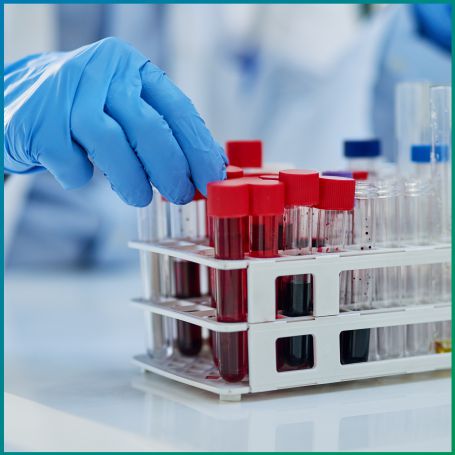
The LDL direct blood test measures the concentration of LDL cholesterol in the bloodstream without requiring a fasting period prior to the test.

Unlike traditional lipid panels, which estimate LDL cholesterol indirectly based on total cholesterol, high-density lipoprotein (HDL), and triglycerides, the direct test provides a more accurate assessment of LDL levels. This is particularly useful for individuals with high triglycerides or those with certain medical conditions that may affect lipid metabolism.
Regular monitoring of LDL direct levels is crucial for anyone at risk of cardiovascular disease, particularly those with a history of heart disease, diabetes, or high blood pressure. Elevated LDL cholesterol is a significant risk factor for atherosclerosis and can lead to serious health complications.
By utilizing the LDL direct test, healthcare professionals can more accurately tailor interventions, including lifestyle modifications, dietary changes, and medications, to help manage cholesterol levels and reduce cardiovascular risk.
Understanding what constitutes a healthy LDL cholesterol level is essential for effective cardiovascular risk management. The LDL direct normal range can vary slightly depending on the laboratory, but general guidelines are as follows:
A] Optimal: Less than 100 mg/dL
B] Near Optimal: 100-129 mg/dL
C] Borderline High: 130-159 mg/dL
D] High: 160-189 mg/dL
E] Very High: 190 mg/dL and above
It's important to consult with a healthcare provider to interpret these values in the context of overall health, family history, and other risk factors.
Several factors can influence your LDL direct levels, including diet, lifestyle, and genetics. Understanding these can help you manage your cholesterol more effectively.
A] Diet - Eating a diet high in saturated fats and trans fats can increase LDL levels. Foods to watch out for include:
1] Red Meat: High in saturated fats.
2] Fried Foods: Often contain trans fats.
3] Full-Fat Dairy Products: Such as butter and cheese.
B] Lifestyle - Your lifestyle choices play a significant role in your cholesterol levels. Key factors include:
1] Exercise: Regular physical activity can help lower LDL levels.
2] Smoking: Smoking can raise LDL levels and lower HDL (good cholesterol) levels.
3] Weight: Being overweight or obese can increase your LDL levels.
C] Genetics - Genetics can also play a role in your LDL levels. If you have a family history of high cholesterol or heart disease, you may be at a higher risk and should monitor your levels closely.
At Diagnopein, we provide comprehensive LDL Direct Test pune using advanced diagnostic technology. Our NABL-accredited lab ensures that all tests meet stringent quality benchmarks, delivering accurate and reliable reports every time. We prioritize top-notch hygiene, maintaining a clean and safe environment for all patients. Our team consists of highly experienced and well-trained staff who are dedicated to offering personalized care and guidance throughout the process. Despite our premium services, we believe in affordability, offering competitive pricing to ensure healthcare is accessible to everyone.
1. LDL Cholesterol, Direct
Since fasting is not required, there are no specific preparations needed. However, it’s always best to follow any instructions provided by your healthcare provider.
The LDL direct test is a routine blood test and is generally safe. The most common risks involve minor discomfort or bruising at the puncture site.
No, one of the advantages of the LDL direct test is that it does not require fasting, making it more convenient for patients.
The test is performed by drawing a blood sample from a vein, typically in your arm. The sample is then sent to a laboratory for analysis to determine your LDL cholesterol levels.